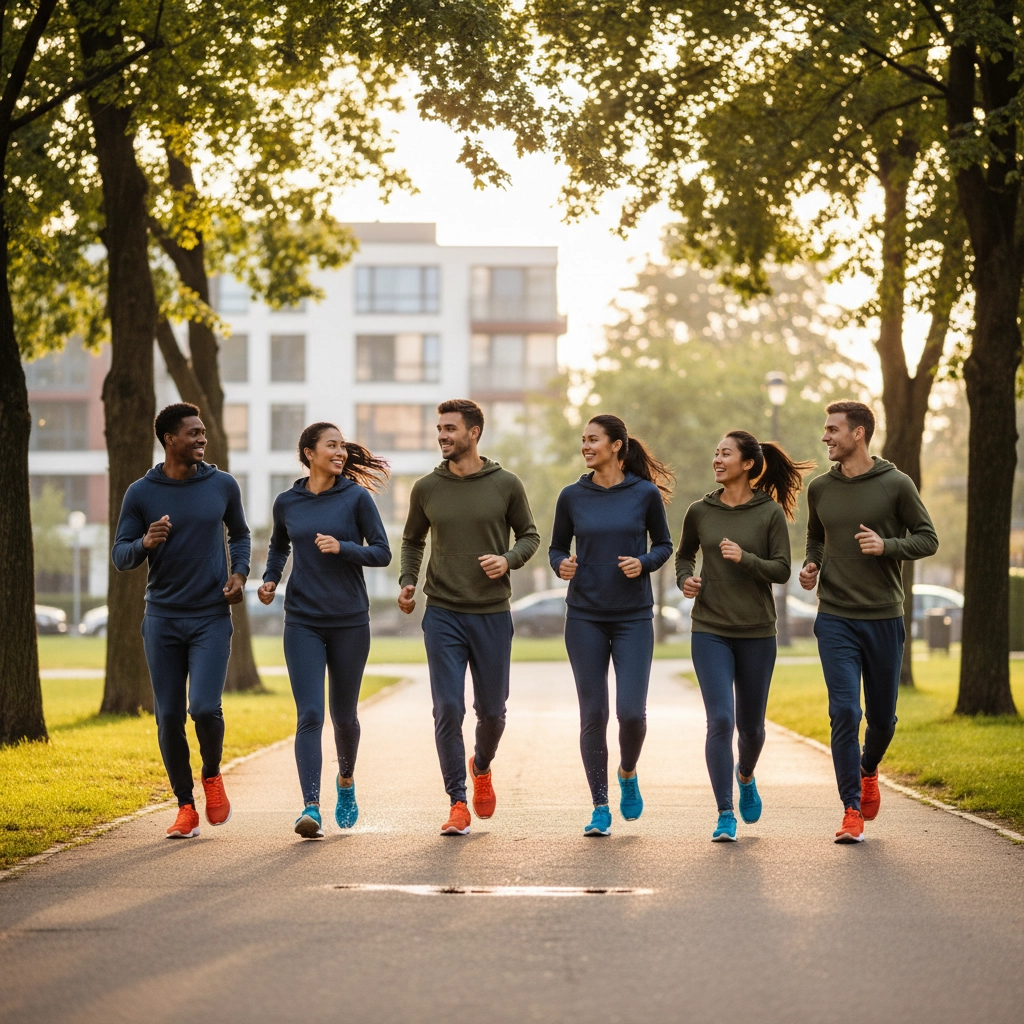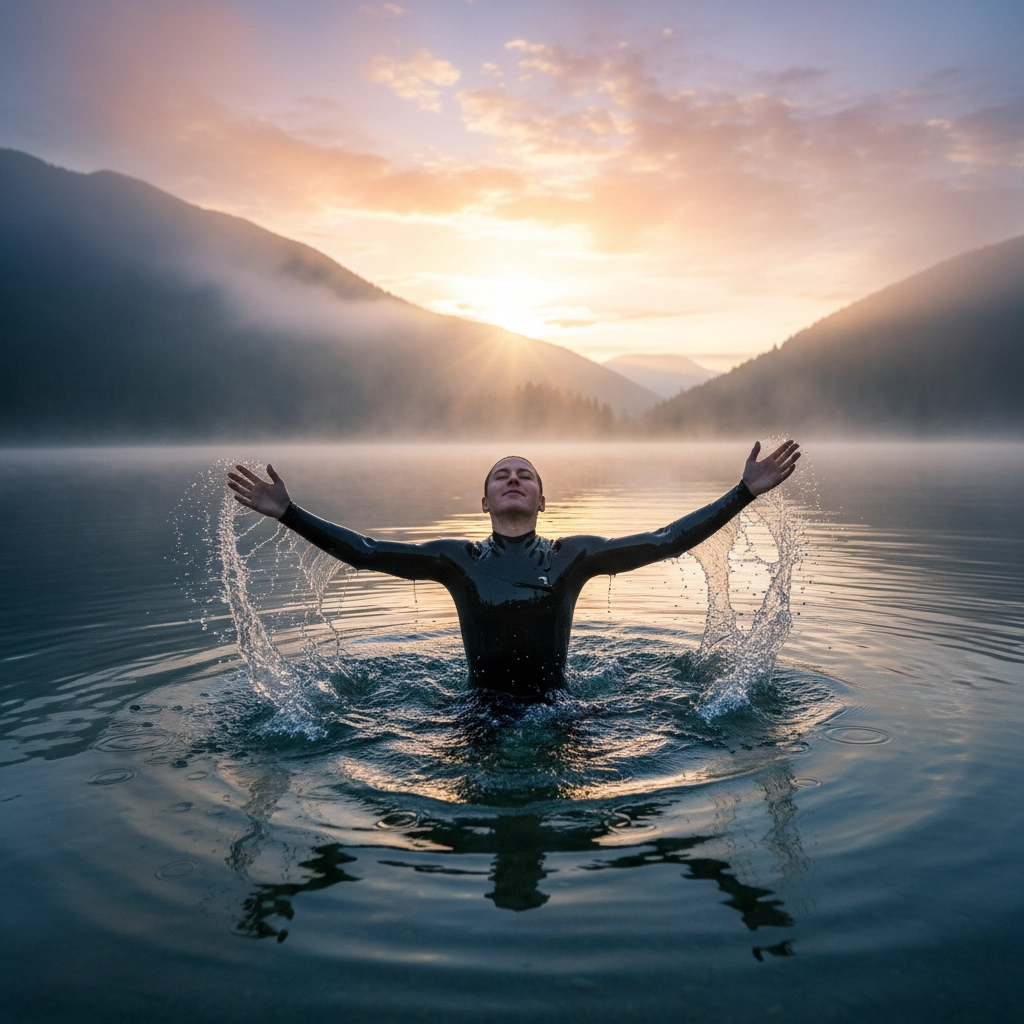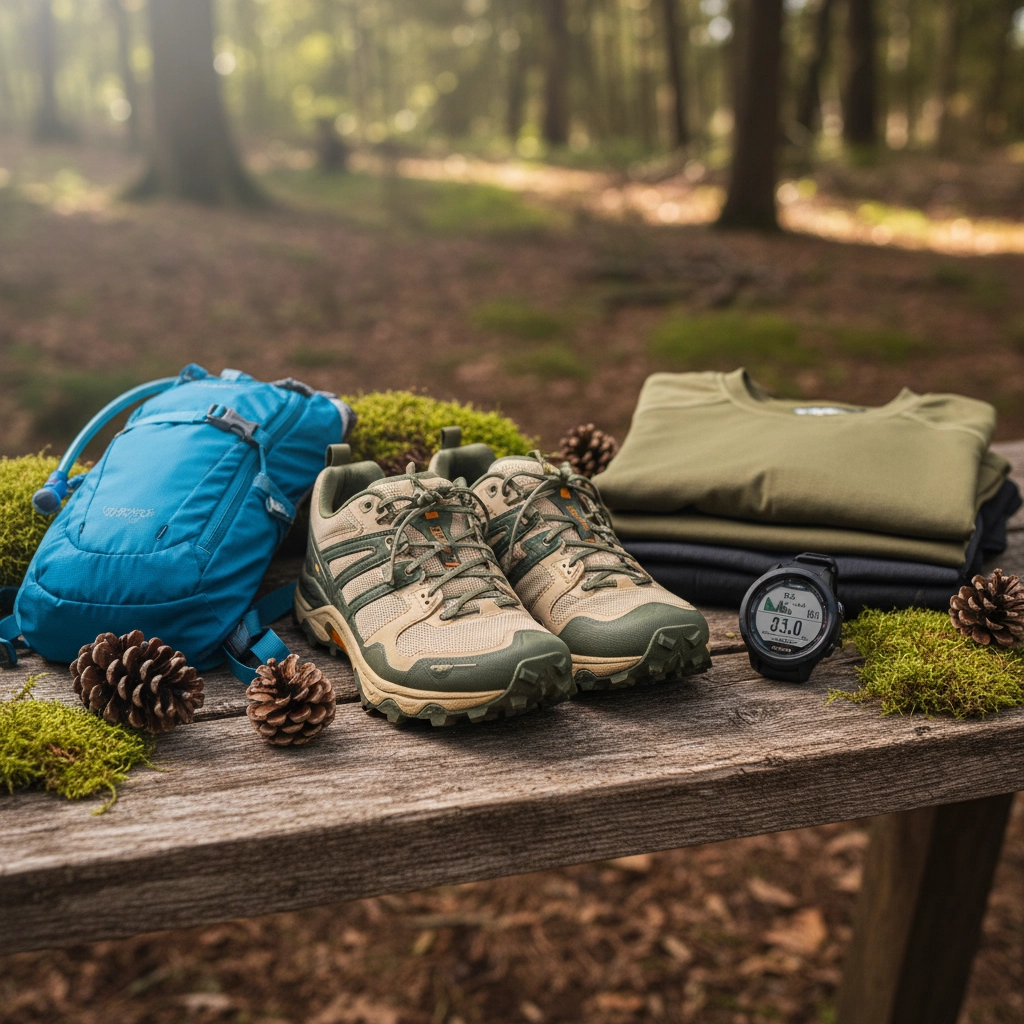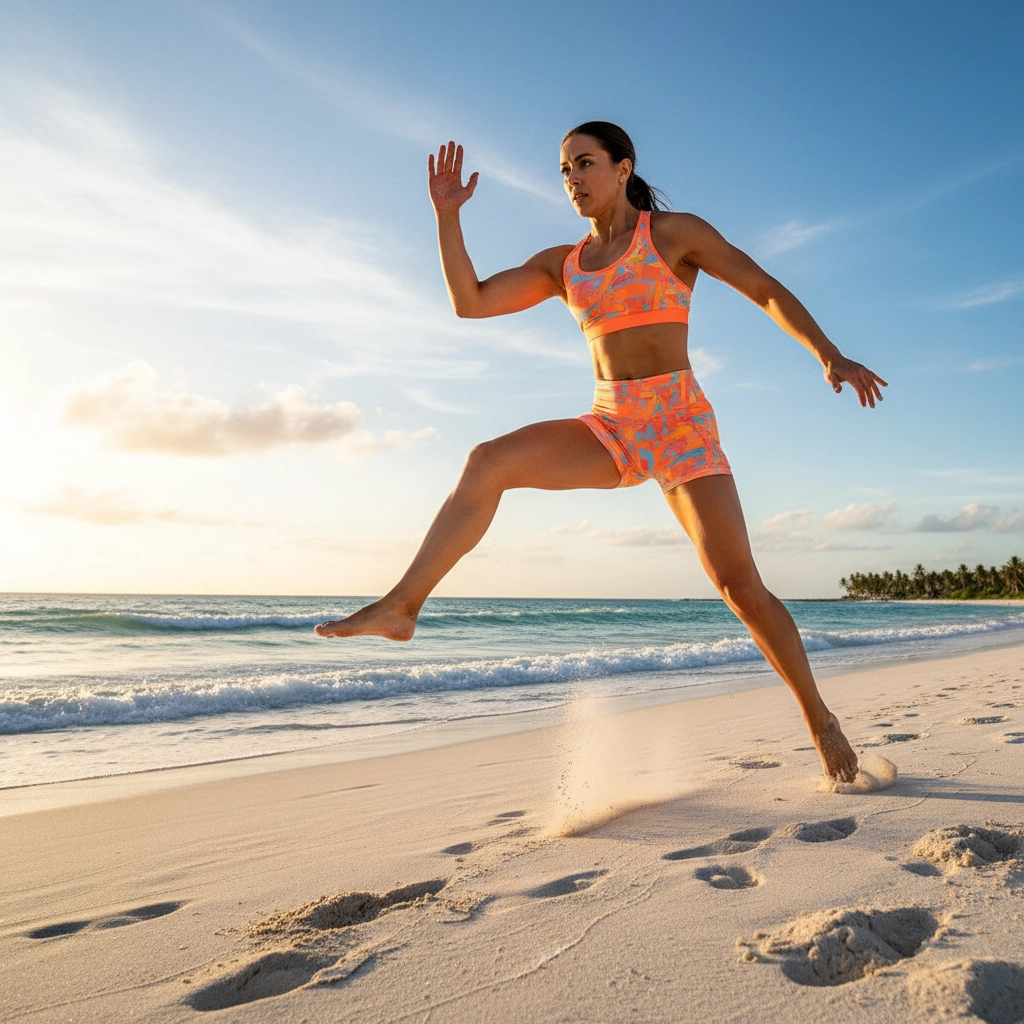Forget the crowded gyms and boring treadmills. 2025 is all about taking your fitness outside, and honestly? It's about time. From run clubs that feel more like social hangouts to cold water dips that'll wake up every cell in your body, outdoor fitness is having a major moment.
Gen Z and Millennials are leading this charge, and they're not just looking for any workout: they want experiences that build community, support mental health, and actually make them excited to move. Plus, with sustainability becoming non-negotiable, outdoor fitness checks all the boxes: zero electricity bills, fresh air instead of recycled gym air, and gear that's built to last.
Ready to ditch the indoor routine? Here are the seven outdoor fitness trends dominating 2025, plus the essential gear to get you started without breaking the bank.
1. Run Clubs: Where Fitness Meets Social Hour
Run clubs are exploding right now, and it's not hard to see why. These aren't your intimidating, ultra-competitive running groups from the past. Today's run clubs are more about community than crushing PRs. Strava reported a 59% increase in run club participation in 2024, and that momentum is carrying strong into 2025.
The beauty of run clubs? They're inclusive. Whether you're huffing through your first 5K or training for ultramarathons, there's a pace group for you. Many clubs incorporate walk breaks, social stops, and post-run hangouts that make the whole experience feel less like exercise and more like the highlight of your week.
Gear you'll need: A solid pair of running shoes (invest here: your knees will thank you), moisture-wicking clothes, and a lightweight hydration solution. Pro tip: many run clubs provide group discounts on gear, so ask around before making big purchases.

2. Cold Water Swimming: The Ultimate Mind-Body Reset
Wild swimming and cold water dipping have moved from niche wellness practice to mainstream fitness trend. And for good reason: the benefits are legit. We're talking improved circulation, reduced inflammation, better sleep, and a mental toughness boost that carries into every other area of your life.
The cold water community is incredibly welcoming, with groups organizing sunrise swims, winter dips, and even ice bath challenges. What started as a handful of hardy souls has become a movement that's attracting everyone from stressed-out office workers to professional athletes.
Essential gear for cold water swimming:
- Water shoes: Protect your feet from rocks and provide grip on slippery surfaces
- Dry robe or changing poncho: These oversized, insulated robes are game-changers for warming up quickly
- Waterproof bag: Keep your dry clothes and phone safe
- Neoprene gloves and booties: For those extra-chilly sessions
Start with short exposures in warmer months and gradually work your way up. Your first polar bear plunge might be shocking, but that post-swim high? Absolutely addictive.
3. Forest Bathing and Woodland Workouts
Forest bathing (shinrin-yoku in Japanese) has evolved beyond meditative walking into full-scale woodland workouts. Think bodyweight circuits using fallen logs as benches, tree branches for pull-ups, and uneven terrain for agility training.
This trend taps into our deep need to reconnect with nature while getting an incredibly functional workout. Unlike gym machines that isolate muscle groups, forest workouts engage your entire body as you navigate roots, rocks, and natural obstacles.
Forest workout essentials:
- Grippy trail shoes: Stability is everything when you're lunging over logs
- Quick-dry clothing: Woods can be unpredictable weather-wise
- Lightweight backpack: For water, snacks, and maybe a first aid kit
- Insect repellent: Because nobody wants to squat with mosquitoes
Many fitness apps now offer forest workout programs that combine traditional exercises with mindful outdoor activities, making it easy to structure your woodland sessions.

4. Trail Running and Hiking: Beyond Basic Cardio
Trail running isn't just running outdoors: it's a completely different animal that engages stabilizing muscles, improves balance, and challenges your body in ways that flat pavement never could. With a 125% jump in trail running events reported in 2024, this trend shows zero signs of slowing down.
What makes trail running special? Every step is different. Your body constantly adapts to changing terrain, elevation, and conditions, creating a dynamic workout that's never boring. Plus, the mental benefits of being surrounded by nature while crushing cardio goals? Unmatched.
Trail running gear that matters:
- Trail-specific running shoes: Different tread patterns for different terrain types
- Hydration pack or belt: Especially important on longer trails
- Navigation tools: GPS watch or smartphone app with offline maps
- Weather-appropriate layers: Mountains and forests create their own weather
Start with local nature trails before tackling more challenging terrain. Your regular running fitness will translate, but those stabilizer muscles might need time to catch up.
5. Beach and Sand Workouts: Nature's Resistance Training
Sand workouts are having a moment, and once you try training on the beach, you'll understand why. Sand's unstable surface forces your body to work harder, engaging core muscles and smaller stabilizing muscles that often get neglected in traditional workouts.
Beach workouts combine the resistance benefits of sand with the mental health boost of being near water. Whether you're doing yoga at sunrise, HIIT circuits at sunset, or simple beach runs, sand training delivers results while keeping you connected to nature.
Beach workout gear:
- Sand-friendly shoes: Lightweight, quick-draining sneakers that won't get destroyed by salt water
- Sun protection: High-SPF sunscreen, hat, and UV-protective clothing
- Sand-resistant towel: Microfiber towels shake clean easily
- Insulated water bottle: Stay hydrated in the sun
Remember that sand workouts are significantly harder than their indoor equivalents. Cut your usual workout time in half when you first transition to beach training.

6. Paddleboarding and Kayaking: Full-Body Water Workouts
Water sports are no longer just summer vacation activities: they're becoming year-round fitness solutions. Paddleboarding and kayaking provide incredible full-body workouts while developing balance, core strength, and upper body power.
What makes these activities so effective? Every paddle stroke engages your core as you maintain balance and generate power. Unlike static gym exercises, water-based workouts are dynamic and constantly challenging as you work with (or against) currents, waves, and wind.
Getting started with paddleboarding/kayaking:
- Personal flotation device (PFD): Safety first, always
- Quick-dry clothing: Synthetic fabrics or neoprene depending on water temperature
- Waterproof phone case: For navigation and emergency communication
- Dry bag: Keep extra clothes and snacks safe
- Sun protection: Reflected sun off water is intense
Many locations offer equipment rentals, so you can try different board types and kayak styles before investing in your own gear.
7. Green Gyms and Outdoor Fitness Parks: Community-Centered Training
Outdoor fitness parks are popping up everywhere, creating "green gyms" where communities can strength train, stretch, and build endurance while soaking up vitamin D and fresh air. These spaces feature everything from outdoor rowing machines and pull-up bars to suspension training systems and kettlebell areas.
The green gym movement represents a shift toward more accessible, community-centered fitness. Unlike expensive gym memberships, these outdoor spaces are typically free and available 24/7. They're becoming social hubs where neighbors meet, workout groups form, and fitness becomes a community activity rather than a solo struggle.
Making the most of outdoor fitness parks:
- Weather-resistant workout gear: Clothes that perform in various conditions
- Personal yoga mat: For ground exercises and stretching
- Resistance bands: Add variety to bodyweight exercises
- Water and towel: Stay hydrated and comfortable
Check your local parks department website: many cities are adding new outdoor fitness equipment and hosting group classes in these spaces.
The Recovery Revolution: Don't Skip the Gear That Heals
Here's what 2025 has taught us: recovery is just as important as the workout itself. The outdoor fitness community is embracing active recovery tools that support their adventure-heavy lifestyles.
Essential recovery gear:
- Foam roller: Target tight spots after trail runs or beach workouts
- Recovery sandals: Give your feet a break with cushioned, supportive footwear
- Portable yoga mat: For stretching sessions anywhere
- Compression gear: Support circulation during and after tough outdoor sessions

Gear Up Sustainably: Quality Over Quantity
The 2025 outdoor fitness crowd isn't just thinking about performance: they're prioritizing sustainability. Instead of buying cheap gear that needs constant replacement, invest in quality pieces that'll last for years of adventures.
Look for brands that prioritize environmental responsibility, offer repair services, and create products designed for longevity. Your wallet and the planet will thank you.
Tech That Actually Enhances Your Outdoor Experience
Smart wearables and GPS devices have evolved to provide real-time terrain data, weather updates, and safety features that genuinely enhance outdoor workouts. But remember: technology should support your outdoor experience, not dominate it.
The most successful outdoor fitness enthusiasts use tech strategically: GPS for navigation and safety, heart rate monitoring for training zones, and apps for discovering new trails or connecting with local communities.
Ready to take your fitness outside? The gear doesn't have to be complicated or expensive. Start with the basics for whichever trend calls to you most, and build your kit as you discover what you love. The outdoor fitness community is incredibly welcoming: just show up, bring water, and prepare to discover why so many people are choosing nature over gyms.
Your 2025 fitness journey is waiting outside your front door. Time to open it.

0 comments